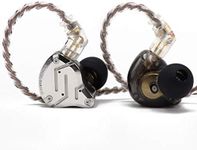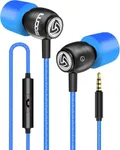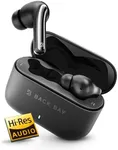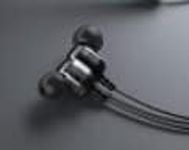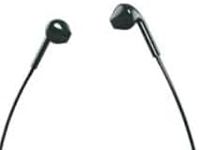Buying Guide for the Best Wired Earbuds
When choosing wired earbuds, focus on comfort, sound quality, and compatibility with your device. Wired earbuds are popular because they offer reliable sound without the need to charge batteries and often have less audio delay. To find the best fit for you, consider how and where you’ll use them—whether for commuting, exercise, calls, or just casual listening. Aim for a balance between audio performance and wearing comfort that suits your daily habits.Driver SizeThe driver is the component inside the earbuds that produces sound, and its size impacts audio quality, particularly bass. Generally, larger drivers can produce deeper and richer sound, although earbud drivers are usually smaller than those in headphones. Most wired earbuds have drivers between 6mm and 15mm. If you want powerful bass and fuller sound, look for earbuds with drivers on the larger end of this range. If you prioritize compactness and don't mind less pronounced bass, smaller drivers might suit you just fine. Your choice should depend on what kind of music you listen to and your overall sound preference.
Frequency ResponseFrequency response is the range of audio frequencies that the earbuds can produce, measured in Hertz (Hz). The wider the range, the more sounds—from deep bass to high treble—the earbuds can reproduce. Most human hearing ranges from 20Hz to 20,000Hz, so earbuds covering those frequencies will display all the details humans can perceive. If a pair of earbuds offers a slightly wider range, it won’t hurt, but focus on how balanced and clear the sound feels to your ears, since not all frequencies are equally important for all types of listening.
ImpedanceImpedance refers to the electrical resistance of the earbuds, measured in Ohms (Ω), and affects how much power they need from your device. Lower impedance (16-32Ω) works best with smartphones, tablets, and laptops because these devices have less powerful audio outputs. High-impedance earbuds are designed for specialized audio equipment. For everyday use, low impedance is your friend: it means you can plug your earbuds into almost any gadget and get sufficient volume and good clarity.
Wired Connector TypeThis refers to the plug that connects the earbuds to your device. The most common is the 3.5mm audio jack, but some wired earbuds may use USB-C or Lightning connectors, especially for newer smartphones that lack a traditional headphone jack. It is important to pick the correct connector that matches your device—otherwise, you’ll need an adapter, which can affect both convenience and sound quality. Always check what ports your main device uses, and select earbuds with a compatible connector.
Earbud Design and FitEarbuds come in different shapes: some are worn just inside the outer ear (standard earbuds), while others go deeper into the ear canal (in-ear monitors or IEMs) and may include various ear tip sizes for a custom fit. The right fit is essential for both comfort and sound quality since earbuds that seal well also block more outside noise and deliver clearer audio. If you’re sensitive to wearing things in your ear for long periods or if you use earbuds for exercise, pay close attention to the design and choose one that feels secure and comfortable for your daily routines.
Microphone and ControlsMany wired earbuds have a built-in microphone for making calls and buttons to control music playback or answer phone calls. Some even have volume controls or track skipping. If you use your earbuds for calls or meetings, or want on-the-go control without touching your phone, look for a model with these extra features. For pure listening, you might not need them, but for commuting or multitasking, they can be very handy.
Cable Quality and LengthThe cable connects your earbuds to your device, and its durability and length can greatly affect everyday use. A longer, tangle-resistant, or braided cable is ideal if you move around a lot, while a shorter cable might be better for pocket use and portability. Consider the thickness and flexibility of the cable as well—thicker or braided cables tend to last longer, but thin, soft cables are lighter and less bulky. If you have specific needs, such as using your earbuds at a desk, during sports, or while traveling, let that guide your choice.






